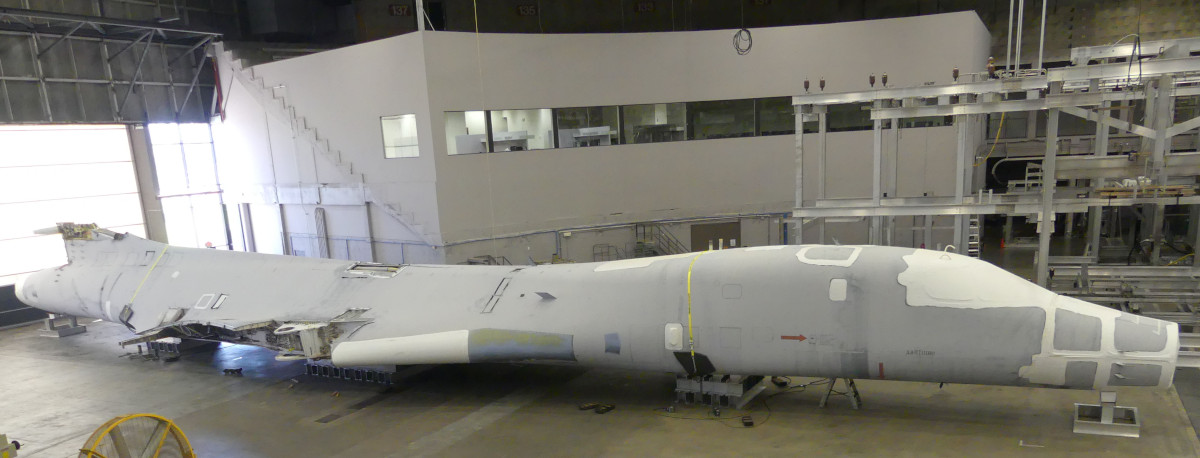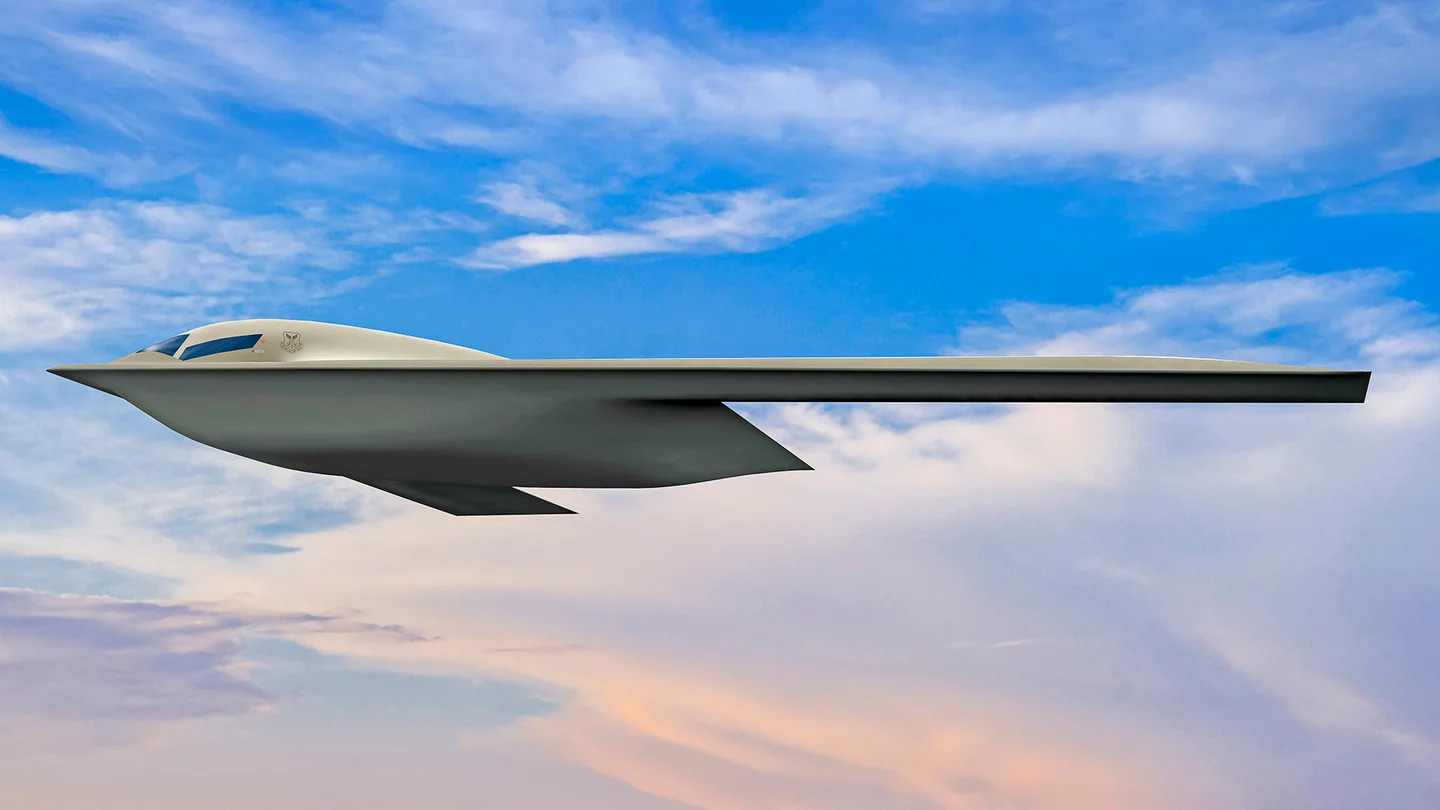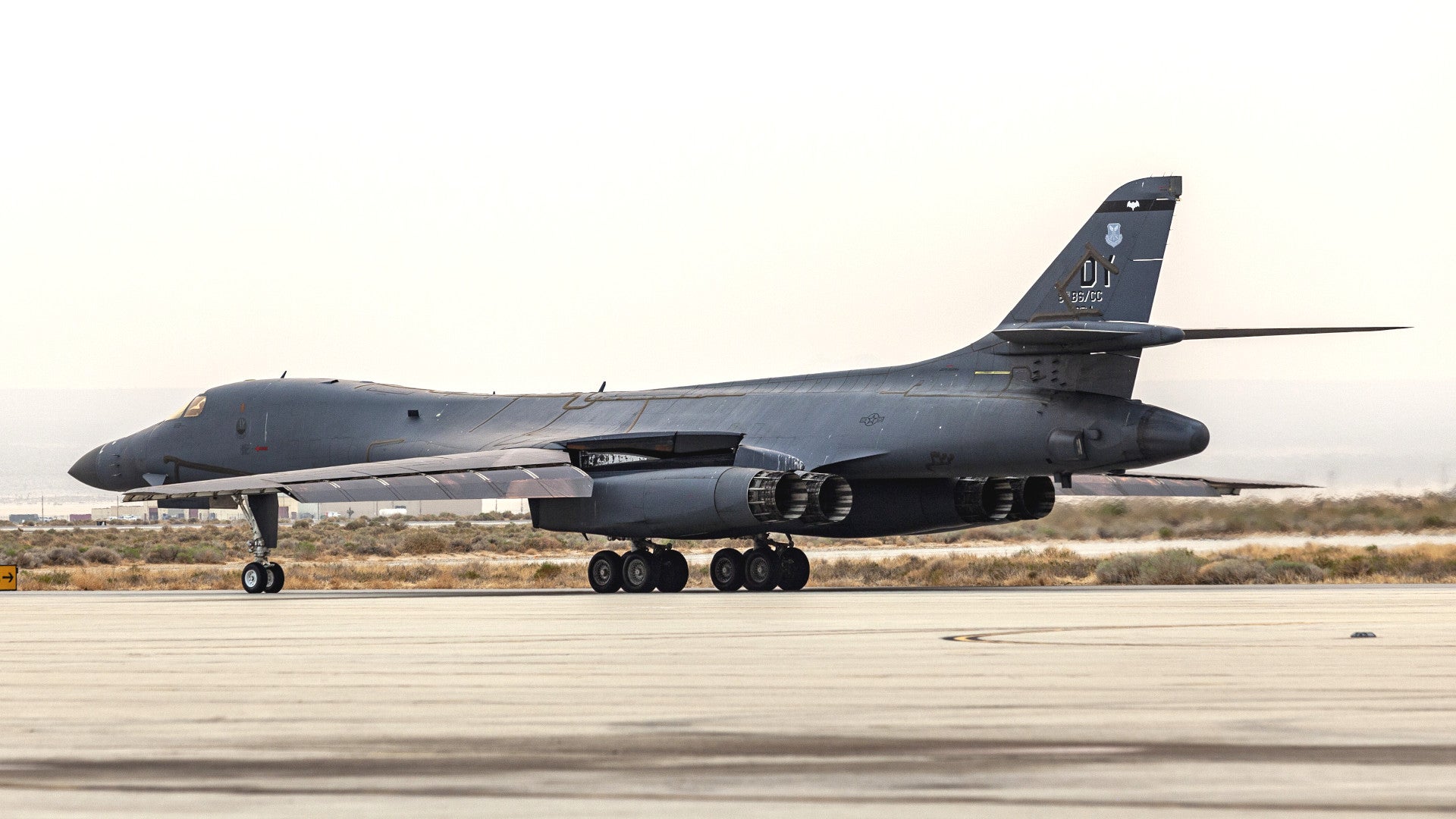The U.S. Air Force has successfully concluded the retirement of a group of 17 B-1B bombers, with the last of these aircraft arriving at the Bone Yard at Davis-Monthan Air Force Base in Arizona yesterday. This divestiture plan, which Congress approved last year, is intended to help consolidate the B-1B fleet and improve its readiness rates ahead of the type’s complete replacement by the B-21 Raider stealth bomber.
In a press release, Air Force Global Strike Command (AFGSC) announced that the last of these 17 B-1Bs slated for retirement had left Edwards Air Force Base in California yesterday and headed to the Bone Yard. The bomber in question carried serial number 85-0074. The first bomber in this group to be retired had left Ellsworth Air Force Base in South Dakota back in February. These divestments mean that the Air Force now has 45 of these aircraft in service, down from 62 at the beginning of the year. The service, which received a total of 100 B-1Bs in the 1980s, had previously retired 33 of them as part of an earlier consolidation effort between 2002 and 2003, and has lost others to accidents over the years.

“The divesture plan was executed very smoothly,” Air Force Brigadier General Kenyon Bell, AFGSC’s Director of Logistics and Engineering, said in a statement. “With fewer aircraft in the B-1 fleet, maintainers will be able to give more time and attention to each aircraft remaining in the fleet.”
“Continuous operations over the last 20 years have taken a toll on our B-1B fleet, and the aircraft we retired would have taken between 10 and 30 million dollars per aircraft to get back to a status quo fleet in the short term,” Bell added. Over the past two decades, the Air Force’s B-1Bs have seen heavy combat use in the now-concluded conflict in Afghanistan, as well as in Iraq and Syria, which took a notable toll on the readiness of the fleet. This had led to restrictions being imposed on how many hours each aircraft could fly annually, as well as what kind of maneuvers they could perform during training.
The aircraft are notably maintenance intensive, to begin with, and are just becoming older and more difficult to sustain, in general. The entire fleet was grounded for a period of weeks earlier this year, something The War Zone
was first to report, after a serious issue was found relating to the augmenter fuel pump filter housing related to the four F101-GE-102 engines on each jet.
Of the 17 B-1Bs that were retired this year, only 13 went to the Bone Yard. The bulk of those aircraft are in so-called Type 4000 storage, which is relatively deep storage. However, four of them are being kept in Type 2000 “recallable storage,” which means that they will be maintained in a way that will make it easier to return them to service should that be necessary, due to any potential future combat losses or accidents. It is worth noting that Type 2000 storage is one step down from Type 1000 “inviolate storage,” which prohibits any part of the plane from being removed and used elsewhere in the interim, and that it can still take months to get aircraft kept in that condition flying again.
Of the remaining four aircraft, one of them is now on display at the Global Power Museum at Barksdale Air Force Base in Louisiana. Another retired bomber went to Edwards Air Force Base to be used as a ground trainer. Tinker Air Force Base in Oklahoma received one that it will use as “a prototype for structural repair actions,” according to AFGCS. The National Institute for Aviation Research (NIAR), part of Wichita State University in Wichita, Kansas, also got one of the aircraft as part of a project to create so-called “digital twins” of the B-1B for use as digital engineering tools to support the continued development of upgrades and fixes for the remaining operational bombers in the years to come, which you can read more about here.

The digital twin effort at NAIR and the work being done at Tinker to improve depot-level repair processes are particularly important as the Air Force expects the B-1B to continue being a valuable long-range strike platform in the years to come, despite the fact that the type is now clearly entering the twilight of its career. Though the plan is to have the last of these bombers out of service by 2036, they are still expected to receive a number of new upgrades and improvements before then.
This notably includes ongoing work to restore the B-1B’s ability to use a number of external pylons, which could be especially useful for carrying outsized stores, such as future hypersonic missiles. The Air Force has also been working to expand the missions these bombers can perform, including in the maritime domain through the integration of anti-ship weapons, such as the AGM-158C Long-Range Anti-Ship Missile (LRASM). Being able to use these aircraft as launch platforms for hypersonic weapons or in a maritime role will still be operationally relevant in any potential future high-end conflict against a near-peer adversary, such as China or Russia, in the coming years.

At the same time, “beginning to retire these legacy bombers allows us to pave the way for the B-21 Raider,” AFGSC’s Brigadier General Bell noted in his statement today. The Air Force’s overall bomber roadmap envisions the complete replacement of the B-1B fleet, as well as its existing B-2 Spirit stealth bombers, with B-21s. Upgraded B-52 bombers will also remain in service. Earlier this week, the service disclosed that a total of five pre-production Raiders are now in the final stages of being built, as that program progresses toward a first flight for the type. The first B-21s are expected to enter service in the mid-2020s.

All told, while the B-1B still has an important role to play in the years to come, the Air Force’s completion of its latest trimming-back of the fleet does put the service that much closer to the final sunset for these swing-wing bombers.
Contact the author: joe@thedrive.com
